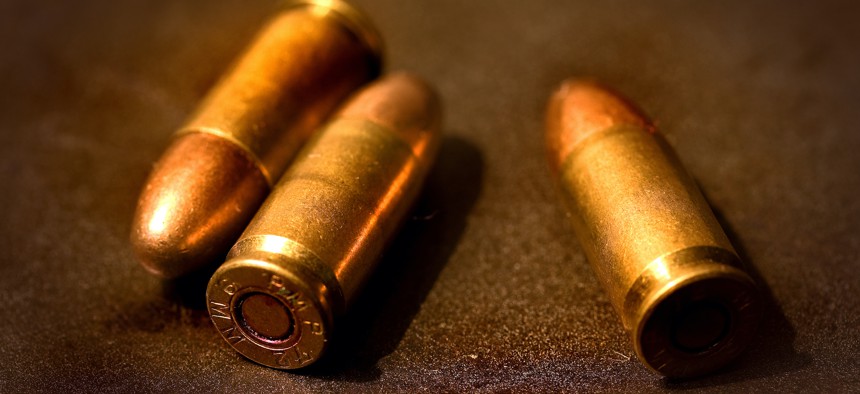Gun Control
What is gun microstamping?
A state bill that would require the technology to be included in the manufacturing of some guns sold in New York could be passed by the end of the week.

Microstamping technology is among 10 pieces of gun-control legislation Democratic leaders are aiming to pass before the end of the legislative session on Friday. John Wilkinson Photography
Legislation designed to make it easier for law enforcement to trace the history of bullets recovered from crime scenes is among 10 pieces of gun-control legislation that could be passed before the end of the session this week.
Referred to as “microstamping,” the technology has been debated in the Legislature – and strongly opposed by the gun lobby – for over a decade. But in the wake of mass shootings in Buffalo and Uvalde, Texas, over the past month, calls for gun reforms have amplified. Here’s what you need to know about the bill:
How does the technology work?
The legislation would require a “microstamp,” or a “unique alphanumeric or geometric code that identifies the make, model and serial number of a firearm” to be printed on at least one location of the cartridge case that is expelled from a fired pistol. The rule would apply only to newly manufactured semiautomatic pistols.
What is the process for implementing the new legislation?
If the legislation were passed, it would not take effect for at least four-and-a-half years. First, the Division of Criminal Justice Statistics would have 180 days to study the viability of the technology. Then, it would have an additional year to establish standards and protocols for implementation. Following the six-month study period, the full law would not take effect for another four years.
What would the penalty be for violating the law?
Firearm dealers who sell a pistol without a microstamp would be fined $500 for the first offense and could have their license revoked or suspended. A second offense would result in a $5,000 fine, and a third offense would guarantee the suspension or revocation of their license, along with a Class A misdemeanor charge.
How likely is the legislation to pass?
The bill is among 10 pieces of gun-control legislation Democratic leaders are aiming to pass before the end of the legislative session on Friday. Though it has been introduced in every session since 2009, it appears to be moving through committees and has been scheduled for a vote in the Assembly, where it is sponsored by Assembly Member Linda Rosenthal. Its state Senate sponsor, Sen. Brad Hoylman, recently told City & State it was “hopefully ready for passage.”
What other states use this technology?
California is the only other state to require microstamping of guns under legislation passed in 2007. It was fully implemented in 2013, following certification from the California Department of Justice, but the gun industry has effectively prevented it from being used by refusing to manufacture the types of guns that are subject to the law. Under subsequent legislation that will take effect in California in July, more newly manufactured guns will be required to have microstamps.
What do opponents of the bill say?
Law enforcement is skeptical of the technology’s effectiveness, and the gun lobby campaigns against it. “We are not opposed to a microstamping requirement, but we are doubtful that it will be of great practical value in criminal investigations,” Peter Kehoe, executive director of the New York State Sheriffs’ Association told Gothamist. Sometimes – 54% to 88% of the time, according to studies cited by the Los Angeles Times – themicrostamps are not readable when they are recovered.
In California, the gun lobby has waged court battles arguing that the technology limits the availability of purchasable guns on the market, because some manufacturers have chosen not to, or are unable, to make guns that are subject to the law. In 2018, the California Supreme Court upheld the microstamping legislation, rejecting arguments made against the rule in a lawsuit filed by the National Shooting Sports Foundation and the Sporting Arms and Ammunition Manufacturers Institute.

